Onboarding is nothing new. If you have worked at any medium or large company you are likely to have been through it, but it was probably called induction. For many, it is a few days of icebreakers and PowerPoint slides explaining the company in more detail, various important departments and other information needed to get going.
If you are a gamer, you would know this better as the tutorial level at the beginning of the game.
In both cases, the end goal is the same, get a new person being productive as efficiently and effectively as possible.
The big difference is the delivery mechanisms used.
First Impressions Count
An employee’s first look at the “real” company happens during onboarding. This is the first exposure to other people they are likely to be working with, to the true corporate culture and to some of the more practical aspects of their new day to day life. It is also the company’s first opportunity to make them feel at home and like a valued new member of the team. Sure, they will know something about the company, they would have had interviews, done research, possibly gone through assessment centres, but this is different. It is a time where a company can ask itself the question “What do we want our employees to think of us?” If you want them to think of you as a company driven by a culture of “death by PowerPoint”, it might be best to stop reading now.
Onboarding does not stop in the first few days after the induction, though many may feel this way. A study for the Academy of Management journal found that the first 90 days of a person’s new job were essential for creating social connections and bonds to the company. If they felt supported during this time, then they felt more positive towards the company.
What Makes Good Onboarding Experiences
Baek and Bramwell of Cornell University conducted research into how you measure the effectiveness of onboarding. They concluded that one of the best measures of an effective onboarding experience was time to proficiency. They defined this as the time it took a new hire to reach full productivity within the context of their role.
For this to happen, a new employee needs to have a structured onboarding experience, with specifically defined outcomes, and an experience that is hopefully engaging to them. At the end of their onboarding employees need to have achieved four clear objectives for the best chance of ongoing success (Bauer et al):
- Role Clarity; employees understand their role, expectations with it, how to perform in order to achieve expected results
- Self-efficacy; employees feel confident in their ability to perform and contribute
- Social integration – employees feel connected, valued & trusted
- Knowledge of organisational culture; employees understanding and adjusting to company politics, social norms such as language, goals, values and history.
How We Approach Onboarding
Some are also of the firm belief that onboarding into a new company can (or should) actually start from the day a new employee signs on the dotted line. The time before they step foot on company property is ripe for helping them start to understand some of the basics about their new employer. Much of what would traditionally be done in a conference room over a few days, can be achieved online during the weeks they are waiting to start the new role.
Games and gamification are already being utilised in the attraction phases of recruitment, with games being created to simulate everything from a day in the life of a new employee to testing an employee’s soft skills.
Following that trend into the employment phase of an employee’s journey, we can make use of gamification to create unique and engaging experiences that keep them informed and interested up to and during their first few months of employment.
Creating these kinds of experiences takes time and expertise, balancing the needs and culture of the company with needs of the new employee.
We consider these weeks and months as a quest, creating a structure around what they need to learn and understand early on. Each stage or level of the quest represents new knowledge and experiences that will help them to learn. Focusing on intrinsic motivation, we choose mechanics that support the player’s with social connectedness, education and goals to focus on, all in an environment that promotes exploration and discovery at their own pace. To this we this we add mini-games and interactive learning materials all tied together with interesting narratives and storylines. This gives the players reasons to want to continue rather than just knowing they have to continue.
Good onboarding can lead to higher rates of retention in companies, some statistics quoting as much as 69% higher retention after 3 years for companies with great programmes. It gives employees the opportunity to feel at home and become productive faster. Don’t waste this key opportunity to create a more engaged workforce by relying on traditional or even default methods, simply because “That’s how it’s always been done”.



